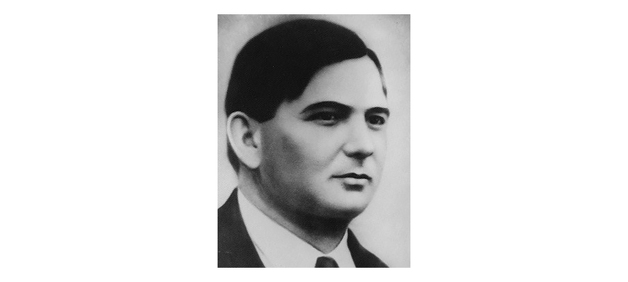Imre Bródy was born 128 years ago, on 23 December 1891. As a member of the Tungsram Research Laboratory, this outstanding theoretical physicist devoted his scientific work to solving the issue of economically efficient lighting. Bródy is best known as ‘the father of the krypton lamp’.
Imre Bródy graduated as secondary school teacher for mathematics and physics at the Royal Hungarian University in Budapest in 1915. In 1917, he was awarded the doctorate in physics for his thesis about the chemical constants of the ideal gases consisting of one single atom. In 1919 he worked as assistant lecturer at the University in Budapest. From 1920 to 1923 Bródy was engaged as a physicist at Göttingen University with Professor Max Born, and served as one of the editors of the prestigious Zeitschrift für Physik. Despite his fruitful, promising scientific career, Bródy returned to Hungary in 1923. From July 1923 he worked as a leading member of the Tungsram Research Laboratory. His primary responsibility was to change the gas filling of incandescent lamps in a way that would considerably improve their efficiency and quality. He must have contributed to 16 patents registered in Hungary under the name of the company and one was registered under his name with Tivadar Millner in the USA. Bródy’s most important result, achieved in co-operation with his colleagues in the laboratory (Emil Theisz, Ferenc Kőrösy, Tivadar Millner) and with Michael Polányi, was the incandescent lamp filled with krypton and the method of extracting this rare gas from the air. Thanks to his work at Tungsram, Bródy was safe in the Tungsram factory. However, when his wife and daughter were deported, he joined them. Bródy died in the concentration camp of Mühldorf am Inn (according to other sources, he died in Auschwitz-Birkenau).

Imre Bródy, the theoretical physicist, proved to be an excellent man for applying science to forward industry. He was well-known for solving practical issues by identifying and showing the key problem. This proved crucial for the success of his experiments aiming to improve the efficiency of incandescent lamps as well. He did not accept that the lower grade of heat conductivity of argon was the only reason for the higher efficiency of lamps filled with the argon-nitrogen mixture. Finding the key answer in thermodynamics, Bródy proved that the higher weight of the single molecules of the filling gas helps to diminish the thermic diffusion, thereby diminishing the blackening of the bulb and improving the life of the tungsten file and the lamp itself. It was not Bródy who first thought of applying krypton as a filling gas for lamps, but he was the one who persevered in developing a method to extract the rare krypton gas from the air in order to diminish the cost of the gas, and he reconstructed the lamp itself in order to improve efficiency.
In his last years, Bródy experimented with high-tension incandescent lamps. Though these lamps, equally filled with inert gases, gave a particularly bright light, even specially made glass bulbs occasionally exploded; that is why they were not marketed.
After WWII, the Tungsram Research Laboratory was named after Imre Bródy, manifesting the company’s gratitude for his outstanding research and his human qualities.
Source of picture: https://dokutar.omikk.bme.hu/archivum/magyarok/htm/brodyrov.htm


